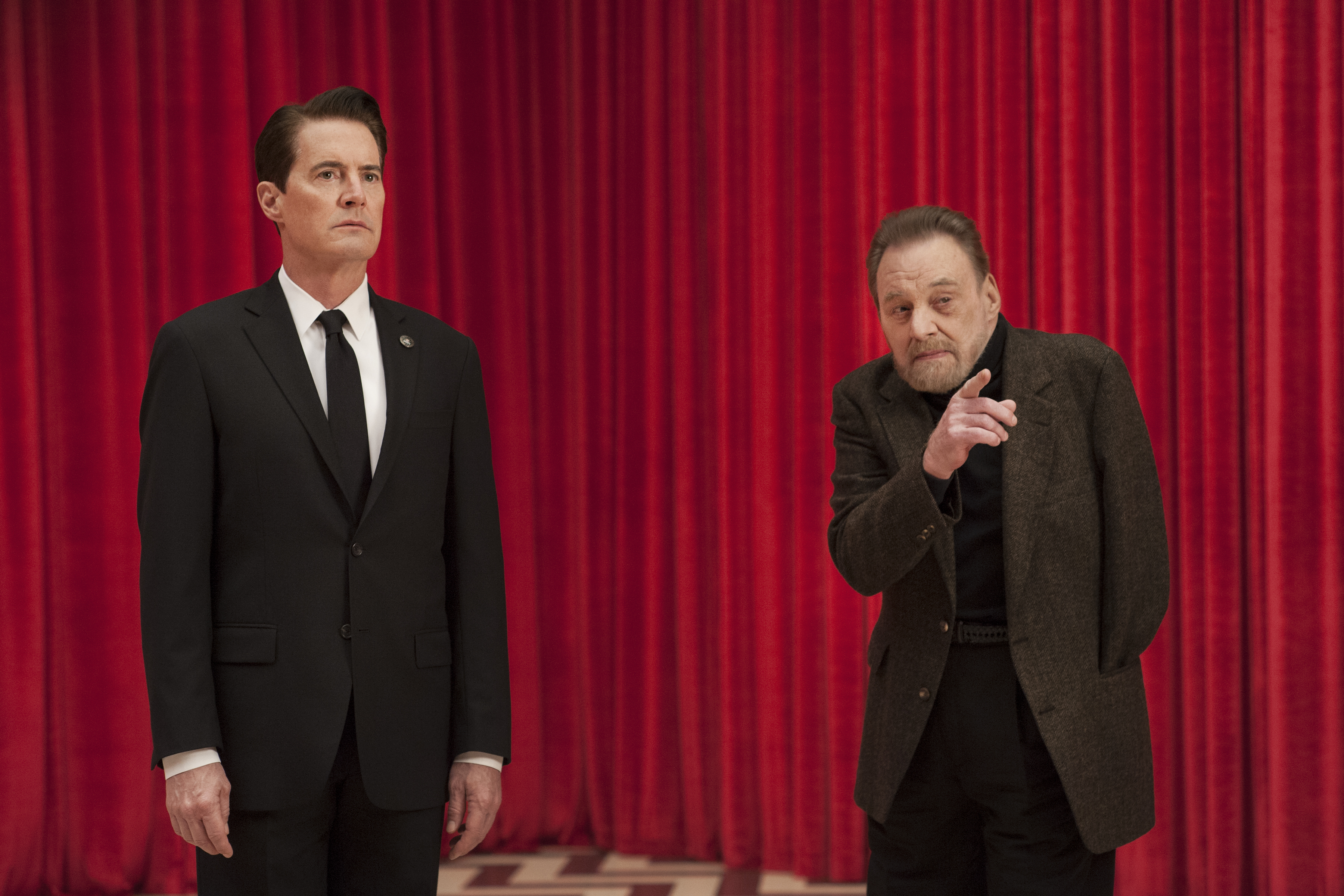It’s rare that a TV show can be as entrancing and uncompromising as Twin Peaks: The Return. Even during the early episodes, when viewers were already trying to piece together the narrative and guess where it would lead, I cautioned others to let go of expectations and simply enjoy the show in the moment. David Lynch has always been an instinctual filmmaker, creating art that’s driven more by his own in-the-moment feelings and whims than the requirements of an overarching plot. This is why his work often takes on a sort of dream logic; it frees him from the constraints of reality, letting his work appeal to the viewer on a basic, primal level. He’s a maestro of emotional scene-construction, who’s not so much bad at traditional storytelling as he is completely disinterested in it.
This is why, as Twin Peaks entered the home-stretch of it’s first (only?) return season, I was shocked at just how much was congealing. Major reveals were coming left and right, tying together several threads from the original series (such as Bob, the “blue rose” cases, Major Briggs, the Black Lodge, and even “Judy”) into something resembling a consistent explanation. Even outside of the background story, Lynch seemed to be guiding the everything toward a cathartic, fan-pleasing finale. After 13 episodes straight of Dougie Jones shenanigans (which, for the record, I really enjoyed), Dale Cooper was finally back to his old self. “I am the FBI,” he proudly stated, to the widespread rejoicing of Twin Peaks fans.
The second-to-last episode pushed even further toward catharsis and resolution. Cooper returned to Twin Peaks, helped defeat his evil doppelganger, and banished the manifestation of Evil Bob. Even Diane got some closure, revealing herself to have been the eyeless, otherworldly Naido the whole time. After Cooper, Gordon, and Diane left their friends in Twin Peaks, the story hinted that Cooper would go back in time and save Laura Palmer, preventing all of the awfulness that had occurred since and restoring goodness to Twin Peaks. For the first time in decades, Lynch had delivered a complete ending and put a bow on it.
But my initial instincts were right, and Lynch never intended to deliver a traditional, satisfying ending to his audience. Episode 18 is uncompromising in its attempt to throw viewers off-base, to upend any sense of logic or consistency that had been established in the previous few episodes. Lynch had proven himself adept at building up a natural conclusion to his show, only so he could tear it down. It’s as explicit a rejection of tidy storytelling as I’ve ever seen.
But despite his conscious rejection of the notion that people need to be spoonfed answers, I get the impression that there’s a part deep inside of Lynch that craves answers to the unknowable. In the original Twin Peaks. the entire framework hung on a federal investigation. In the new series, Gordon and Albert are dead-set on getting to the bottom of everything. No matter how odd a particular element of the story is, there’s almost always some sort of connection to ANOTHER odd, largely unexplained element. Despite what he says publicly, his work WANTS to tease the audience, to invite them to solve a mystery to which there very well may be no solution. In that way, Twin Peaks is best enjoyed on a more textual level, as a collection of fascinating scenes, but one has to fight against the show’s constant reinforcement that there’s a mystery to be solved in order to view it that way.
Once you get to that point, Twin Peaks: The Return is one of the most enthralling television shows in recent memory. It has a pacing and cadence which is completely its own, often using long pauses and drawn-out scenes to force viewers into letting their guard down before presenting them with something they have never seen before. Because some characters are introduced and killed off with little fanfare, and others have no real purpose in the story as a whole, it’s impossible to tell when we’re going to be hit with a major bombshell, or a change of tone.
It’s a show that’s completely unafraid to change formats eight episodes in to present a strange, experimental mood piece depicting mankind’s most destructive moments as a gateway to evil forces. Even within scenes, Lynch has no qualms with going to completely unexpected places. One of my favorite sequences of the season is the scene in which Bobby Briggs meets with his ex-wife Shelly and their daughter, only to witness Shelly being greeted by her new boyfriend. This quickly gives way to a traffic jam, where Bobby confronts an angry, honking woman screaming about her child’s sickness. Then the child, who looks like a zombie, begins puking green gunk all over the vehicle. This has nothing to do with anything else in the series, but is surreal, hilarious, and oddly emotionally appropriate.
There’s no world in which I would suggest that Twin Peaks will appeal to everybody. It’s completely unlike anything else on television, making it hard to recommend based on people’s favorite shows. For audiences to fully enjoy it they need to consciously let go of the idea that it will come together in a wholly-satisfying way. But I thoroughly enjoyed The Return, and even in the crowded landscape of modern television, I miss its presence.

Well said. I did not get that about Diane being the eyes sewn shut girl? I loved how at times it seemed the characters were standing there waiting for the writer to type some more lines for them or how they would just stare for a bit. Yea, Lynch took us down the rabbit hole but it was a fun journey!